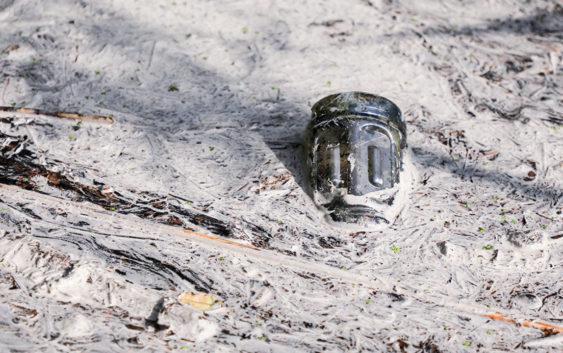- National memorial to honor NC firefighter who died on duty during Hurricane Helene
- Gov. Josh Stein extends State of Emergency for western NC wildfires
- Governor Stein extends state of emergency for NC wildfire threat
- Governor Stein extends emergency in 34 NC counties amid wildfire threat
- Texans can buy emergency preparation supplies tax-free April 26-28 ahead of severe weather season
Coal ash flooding didn’t harm Cape Fear River, NC regulators say

Flooding from Hurricane Florence that submerged a Duke Energy coal ash storage area in Wilmington did not contaminate the Cape Fear River, according to North Carolina’s environmental agency.
“Test results show all metals below state water quality standards with the exception of dissolved copper,” the N.C. Department of Environmental Quality said in a statement.
The laboratory results from the agency contradict warnings issued Wednesday by the Waterkeeper Alliance and Earthjustice that coal ash contamination in Sutton Lake, at the Cape Fear River, was “insanely toxic” with coal ash, and that arsenic levels there were 71 times higher than the state safety standard for water quality.
Sutton Lake, formerly a source of cooling water for Duke Energy’s coal-burning power plants, is a recreational lake used for fishing and boating. During the height of flooding during the storm, the lake took in water from a nearby Duke Energy coal ash pond and released that water back into the river, raising concerns that contaminants had entered the lake and river.
The Department of Environmental Quality took water samples at the breached Lake Sutton dam Sept. 22. On Sept. 25, 26 and 27, the agency took water samples about 1 mile downriver as well as at the dam that was overflowing with flood waters near the coal ash. DEQ took water samples in the same general location of the dam breach where the environmental groups had collected water on Sept 21.
Lab results tend to have the highest readings in water samples taken at or near a flooded coal ash pond. Water sampled downstream at high flood stage is usually very diluted and produces low readings of heavy metals. Additionally, some contaminants in flood waters come from other sources, such as chemical sites, industrial sites and elsewhere.
The agency’s lab analysis shows that arsenic levels were so low as to be undetectable, as were the levels for selenium, boron and other heavy metals associated with coal ash. Only copper exceeded state water standards downstream of the coal ash, but state scientists also got the same slightly elevated readings for copper upstream of the coal ash, indicating the copper came from storm runoff, not from the coal ash.
This is the second time that DEQ lab results have validated tests conducted by Charlotte-based Duke Energy and contradicted water sampling conducted by environmental groups. The agency has also said that Duke’s coal ash impoundments at the H.F. Lee complex in Goldsboro did not contaminate the Neuse River, while environmental groups said they found arsenic levels there that were 18 times higher than state water standards.
“We are pleased that the state’s test results align well with the extensive water sampling Duke Energy continues to perform, demonstrating that Cape Fear River quality is not harmed by Sutton plant operations,” Duke spokeswoman Paige Sheehan said in an emailed statement. “These results, combined with dozens of data points gathered by Duke Energy over many days, make it clear that 3 samples shared by environmental groups yesterday are extreme outliers that do not paint an accurate picture of river quality.”
Duke Energy has said about 2,000 cubic yards of ash was displaced from a landfill by the flooding and moved to a nearby service road or a ditch. Sheehan said Wednesday it was possible some ash flowed into the Cape Fear River, but the effects on water quality were negligible.
Shea Tuberty, a biology professor at Appalachian State University, said in an email that he found the DEQ data reassuring.
“These numbers indicate nothing to worry about other than there is ash or ash tainted water getting free from the lake or holding pond,” said Tuberty, who is also president of the Carolinas Society of Environmental Toxicology and Chemistry.
But Donna Lisenby, global advocacy manager of the Waterkeeper Alliance, said by email that the environmental organization took water samples close to the coal ash pond to capture the full extent of the coal ash leakage into public waters. She said the Waterkeeper Alliance lab results are backed up by photos taken from airplanes and boats over multiple days.
“They indicate that untold gallons of coal ash and waste water were freely mixing with Sutton Lake,” she said. “They also show multiple breaches in the Sutton Lake dam where coal ash and waste water discharged into the Cape Fear River.”
When coal is burned to generate electricity, the ash settles at the bottom rather than escaping into the air through smokestacks. The ash is not classified as a toxic waste by the Environmental Protection Agency but can cause deformities in wildlife and cancer in humans at elevated levels over many years.
John Murawski: 919-829-8932; @johnmurawski